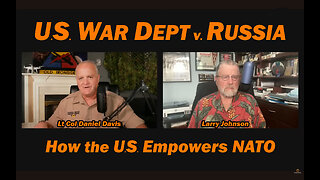Premium Only Content

TRUMP SENDS 200 TROOPS TO GAZA? NOPE. THE FACTS HERE.
Inferences and analysis: what this suggests, and what to watch for
Because these details remain undisclosed, analysts and observers must infer from what is public, historical precedents, and patterns in similar deployments. Here are possible inferences and risks to keep an eye on:
Implicit limits guided by “phase one / support” framing
The way the deployment is described (as support, coordination, monitoring) suggests that its scope is intended to remain non-combatant and limited. The use of terms like “civil-military coordination center” supports that impression.
Likely self-defense rules
Even if the ROE are not public, it would be standard in U.S. military deployments that forces must have a right to self-defense if attacked. That doesn’t mean offensive operations, but protections against immediate threats.
Duration tied to phases and milestones
Because the broader peace / ceasefire accord is structured in phases, one possibility is that the U.S. troops’ stay is tied to the completion or transition between phases (i.e., they remain until certain benchmarks are met). If a phase stalls, the deployment may get extended.
Risk of expansion / mission creep
Over time, pressure (political, security, humanitarian) could push the deployment to take on additional tasks — e.g. limited patrols, intelligence gathering, or direct interventions. Without a strong institutional guardrail or clear legal limits, that is a possibility.
Force protection is likely a strong concern internally
Even if not publicly disclosed, I suspect the Pentagon has internal protocols for protecting the deployed troops, surveillance, hardened bases, contingency evacuation routes, liaison with Israeli forces, etc. These are standard practices in risky deployments, though we do not have public confirmation of the specific plans.
Vulnerability to political dynamics
Because no fixed time limit is public, the deployment’s duration may become a political issue. If casualties occur or the mission drags, domestic pressure could demand withdrawal, or adversaries could use that ambiguity to challenge U.S. resolve.
Watch for leaks or later disclosures
Sometimes, more detailed ROE or deployment limits get revealed later through congressional briefings, leaks, oversight committees, or declassified documents. So it’s possible that a time limit or detailed ROE will emerge publicly in the coming weeks.
-
 21:10
21:10
DYSTOPIA USA
2 days agoTHE FRACTURED RIGHT. UNDERSTANDING TODAY'S REPUBLICAN PARTY
25 -
 21:44
21:44
DeVory Darkins
9 hours ago $5.50 earnedMamdani BODIES Cuomo in fatal debate as California gets exposed for homeless fraud scheme
5.79K36 -
 14:23
14:23
Tactical Considerations
15 hours ago $2.84 earned5 Budget Pistols I would Actually Carry Under $425
22.2K1 -
 15:24
15:24
ArynneWexler
18 hours ago"I'm the Mayor Now" Somalian Midwest Takeover | NN Clip
2.41K19 -
 14:49
14:49
Esports Awards
19 hours agoEsports Awards 2025 Finalist Reveal
13.3K -
 LIVE
LIVE
BEK TV
23 hours agoTrent Loos in the Morning - 10/17/2025
150 watching -
 53:31
53:31
Daniel Davis Deep Dive
16 hours agoU.S. War Dept v. Russia /Larry Johnson & Lt Col Daniel Davis
12.8K14 -
 3:40
3:40
NAG Daily
14 hours agoHOW TO NEVER BE WRONG AGAIN (A COMPLETE GUIDE W/GreenMan Reports)
9.82K -
 9:21
9:21
Dr Disrespect
21 hours agoMOST INSANE 110 ASSIST Game in Battlefield 6
132K7 -
 2:56:34
2:56:34
Side Scrollers Podcast
21 hours agoTwitch PROMOTES DIAPER FURRY + Asmongold/Trans CONTROVERSY + RIP Itagaki + More | Side Scrollers
53.2K8